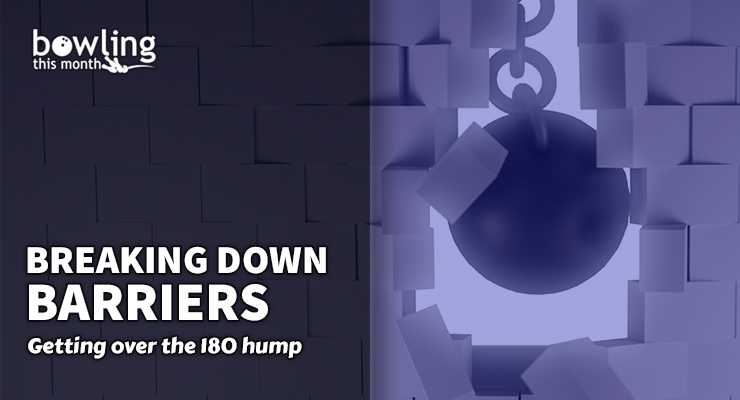Article Contents
- 1. What does a 180 average look like?
- 1.1. Keep the ball in play
- 2. Physical game considerations
- 2.1. What about manipulation skills?
- 3. Lane play considerations
- 3.1. Spare shooting
- 3.2. Blame the lanes
- 3.3. Know yourself
- 3.4. Invest in the right equipment
- 4. Mental roadblocks
- 4.1. Pre-spare routine
- 4.2. “I hate this spare”
- 5. Final thoughts
Note: This article is only available to Bowling This Month subscribers.
As a youth bowler, you could say that I developed slowly. I found myself stuck in the 160 to 170 average range for longer than other kids who were bigger and had more powerful strike balls than I did. Being on the smaller side, this seemed to make sense (and I was used to it), but once I broke through to 180, I very quickly moved up to 200, and then 210, and then 220.
In hindsight, I can see a little more of what happened with my progression, and this article will put the pieces together for you. As in the first article in this series, we’ll start by discussing what a 180 average looks like, based on performance factors, and compare that to a 170 average bowler to highlight key differences. Finally, we’ll discuss physical game, lane play, and mental considerations for bowlers feeling a bit stuck in their games at this level.
What does a 180 average look like?
Last time, I included strike percentage, single pin spare percentage, and closed frames percentage as the main performance factors influencing a bowler’s average. This time, I’m including a fourth performance factor: makeable spares. You’ll see why very soon.
Makeable spares were tracked by excluding single pins, splits, and washouts. They are essentially all of the multi-pin spares that you could be reasonably expected to make. This includes relatively simple combinations such as the 6/10, as well as ...
Already a premium member? Click here to log in.


